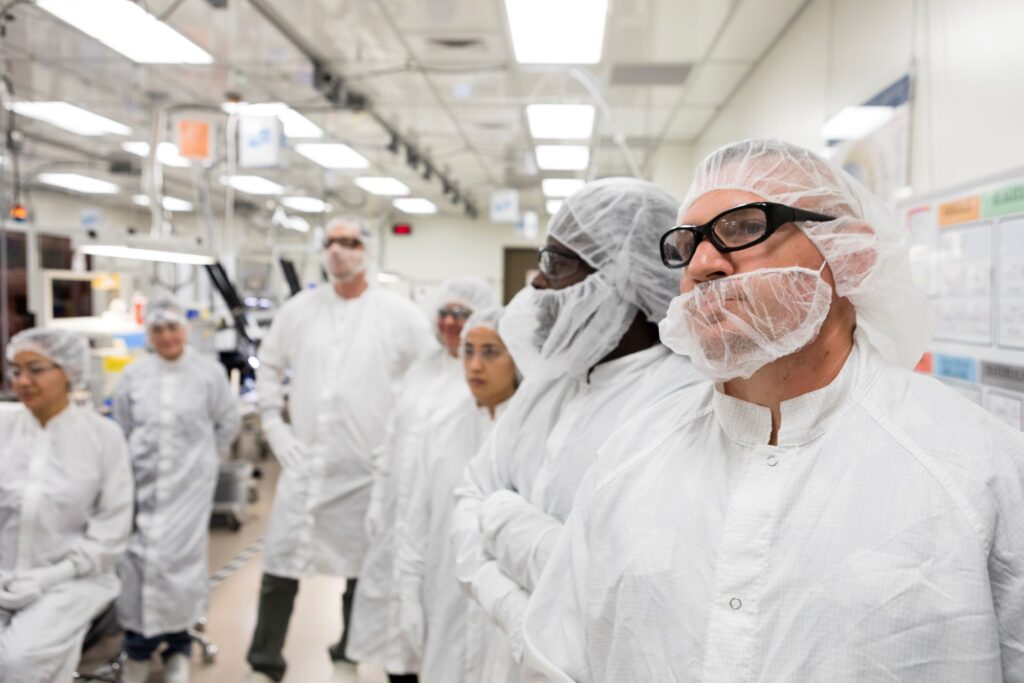According to the report, employment in biosciences has steadily grown in Flagstaff, keeping the city ahead of Tucson in total bioscience and non-hospital bioscience jobs.
Flagstaff is quickly becoming a standout in Arizona’s growing bioscience sector, with business leaders and educational institutions aligning their strategies with the state’s long-term vision outlined in the Arizona Bioscience Roadmap.
First launched in 2002, the Roadmap has served as a blueprint for advancing research, innovation, workforce development and economic impact with the goal of positioning Arizona as a national bioscience leader. More than 20 years later, the newest update developed by SRI International in collaboration with Arizona leaders and commissioned by the Flinn Foundation was unveiled in September with presentations in Flagstaff, Phoenix and Tucson.
At Flagstaff’s event, it was clear the city is playing a leading role in the updated five-year plan. The region is home to high levels of activity in medical devices, healthcare delivery, precision medicine, biotechnology, and genetics and genomics. This contrasts with Southern Arizona, which leans into diagnostics, artificial intelligence and environmental sciences, and with Phoenix, where AI, neuroscience and data science dominate.
According to the report, employment in biosciences has steadily grown in Flagstaff, keeping the city ahead of Tucson in total bioscience and non-hospital bioscience jobs. Industry anchors like W. L. Gore & Associates continue to lead globally in medical devices, joined by companies such as Symple Surgical, Poba Medical and Axolotl Biologix. TGen North, the Pathogen and Microbiome Division of the Translational Genomics Research Institute, drives additional research strength. Northern Arizona Healthcare (NAH) is another anchor, blending patient care with research collaboration.
“As one of the largest bioscience employers in Northern Arizona, we play an important role in the Roadmap,” said NAH Chief Operating Officer Bo Cofield. “Practically, we can utilize the overall bioscience strategy to help recruit providers and colleagues who want to contribute to research, education and bioscience development, along with their clinical care support of our rural communities.”
Flagstaff’s entrepreneurial ecosystem adds more fuel. Moonshot supports emerging startups, and the planned Northern Arizona Technology Park promises to become a hub for bioscience and innovation sectors. Together, these assets create a balanced ecosystem of education, research, health care and industry, one that positions Flagstaff as a unique contributor to Arizona’s statewide bioscience strategy.
Education is central to that ecosystem, as well. Northern Arizona University, recently classified as an R1 research institution, supplies a steady pipeline of graduates in biomedical sciences, public health, nursing and related fields. NAU’s Pathogen and Microbiome Institute has earned national recognition in infectious disease and genomics, while the Center for Community-Engaged Research and collaborations with the Navajo Native American Research Center for Health highlight Flagstaff’s commitment to rural and tribal health. Coconino Community College complements this by preparing the healthcare workforce and offering programs critical to the sector’s growth.
Christiana McFarland, executive director of SRI’s Center for Innovation Strategy and Policy, noted that Flagstaff stood out during the Roadmap process.
“One theme that came through more strongly in Flagstaff than elsewhere was the emphasis on community-engaged research,” she said. “There’s a clear aspiration for the region’s bioscience activity to be tightly linked with local needs, whether in healthcare delivery, rural and tribal health or applied research with direct community benefit.”
As an example, she cited the Partnership for Native American Cancer Prevention, a collaboration between NAU, the University of Arizona Cancer Center and the Native American Research and Training Center. The program builds research experience and grows the Native American biomedical workforce to help address cancer health disparities in tribal communities.
Challenges remain; most notably, Flagstaff’s high cost of living, which can make it harder to attract and retain talent compared to more urban areas. But the outlook for the updated Roadmap is bright. With continued investment, cross-sector collaboration and community engagement, Flagstaff is well-positioned to expand its role as a thriving hub for innovation, research and economic growth in Arizona’s bioscience ecosystem during the next decade. FBN
By Mary Marini, FBN
For more information, downloadable reports and video, visit flinn.org/bioroadmap.
Courtesy Photo: One of Flagstaff’s top long-time employers, W. L. Gore & Associates, continues to be a world leader in innovative medical devices.


